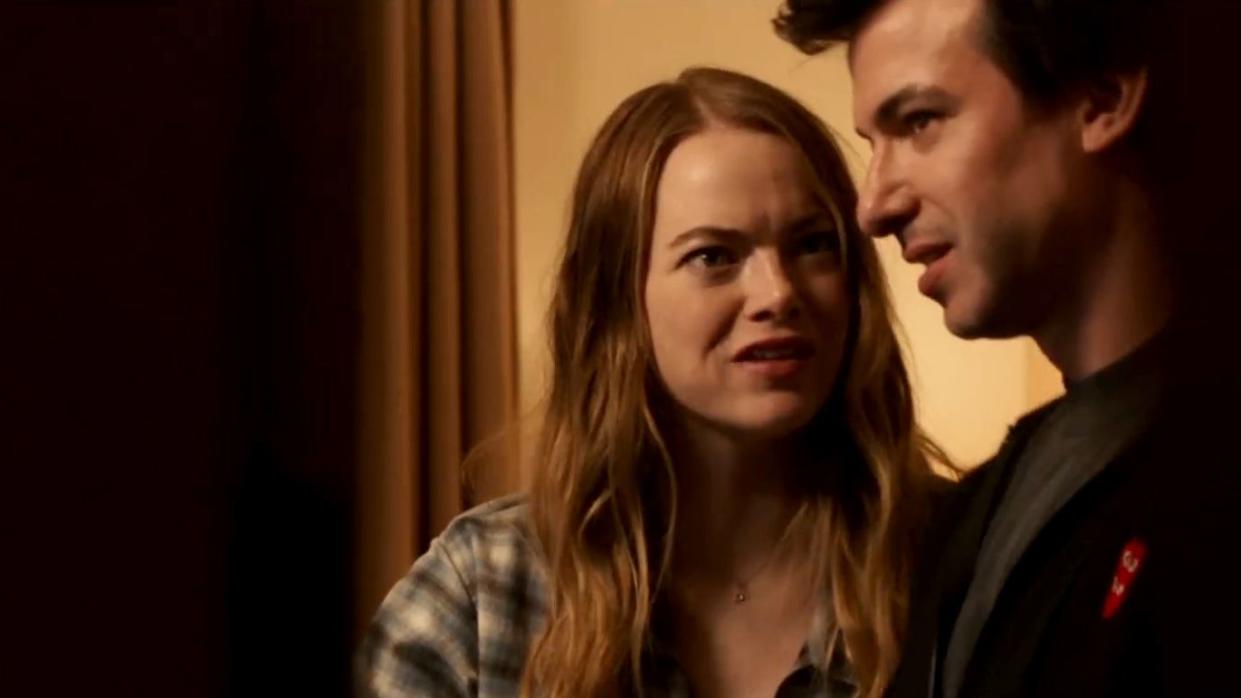In the End, 'The Curse' Put Its Hex on You

If you just finished the season finale of The Curse, you likely have questions. There are the how’s, the why’s, and the what does it mean’s. I’ll get to those. But the mystery I’m currently consumed by? It preceded Asher sailing into the stratosphere like a helium balloon. It’s been on my mind the past few episodes, and it concerns whether or not the show has broken new ground. That is to say: Has there ever before been a show about such unrelentingly unsavory characters?
Television, of course, has seen its share of ethically dubious protagonists. The entire prestige television boom of the past several decades has been built around these people—your killers, crime bosses, con artists, and comedians. But Asher and Whitney Siegel are not antiheroes. If anything, they are the inverse of antiheroes (antivillains?). Antiheroes are baddies who, because they’re complex and because we spend so much time with them, wind up winning our sympathies. Compared to, say, Marty and Wendy Byrde, Asher and Whitney’s misdeeds are fairly pedestrian—they’re gentrifiers with dirty family money, who on the flip side just gifted a stranger a house. And yet, they are magnitudes less appealing than Satan.
The acid reflux the Siegels induce owes a lot to The Curse's writing. They possess all the worst qualities of a certain strain of Very Online Liberal—they’re narcissistic, sanctimonious, and obsessed with trends and optics. Unlike Don Draper or Saul Goodman, they lack talent. And unlike the Roy kids, they lack a sense of humor. Worst of all, they’re prone to saying things like, “Actually I am a tool, because tools fix things.”
In portraying them, Nathan Fielder and Emma Stone amplify their characters’ repulsiveness. Without altering much (anything?) about their normal appearance, they each completely transform. It has to do with how they’re contorting their faces. There’s a lot of eye-squinting and lip-pursing. It’s the mask of people who are so uncomfortable in their own skin and desperate to be liked that they lack any inner substance.
But perhaps more than the writing and the performances, the reason, I think, that we never warm to the Siegels is because of how the show captures them. Fielder and Safdie keep the couple at a remove through the show’s unflatteringly voyeuristic visual language and eerie, synth-heavy score. Directors and showrunners are routinely flabbergasted when audiences root for their despicable protagonists. But if Walter White and Tony Soprano had been photographed through The Curse’s lens, my guess is they would be considerably less appealing.
In The Curse's finale, “Green Queen,” we get a glimpse of the perception-altering effects of lighting and camera angles. The episode opens in the midst of the Rachael Ray Show, with Vincent Pastore (Salvatore "Big Pussy" Bonpensiero on The Sopranos) live in studio, cooking meatballs and antipasto from his cookbook. After a bit of post-commercial banter, Rachael welcomes Asher and a very pregnant Whitney via video to talk about their show, Green Queen, which we learn is newly streaming on HGTV Go.
From the head-on, brightly lit vantage point of a popular daytime television program, Asher and Whitney are, if not likable, at least par for the course—standard, amiable guests. But as Rachael wraps up, The Curse employs what’s certain to be one of the year’s greatest cuts. Returning to the show’s dry aesthetic and distant perspective, we see Asher and Whitney sitting in their home, silently smiling and staring into a camera, until, after a long beat, the camera operator wraps. In this moment, the glamorous illusion drops, and suddenly they look psychotic—two people, sitting in their lifeless bubble, smiling artificially as they gaze into a void.
So, which camera was manipulating us—Rachael Ray or The Curse? It’s both, of course. Where Asher and Whitney’s HGTV project revolves around construction, Fielder and Safdie’s series is all about deconstruction. These past ten weeks, The Curse has been dismantling the artifice involved in making not just reality television, but any show or movie. In doing so, it’s also been training you to look askance at the people you normally look up to.

But that undersells the impact of what the show’s been doing. Because though The Curse is a rich text to think about, its greater power lies in how it’s felt by the audience. “Cringe” is a word that’s thrown around a lot. And yes, there is definitely a lot of cringing going on in the series. But I think that what Safdie and Fielder are really after is closer to vicarious shame. They’ve given Whitney and Asher the progressive values, AirSpace aesthetics, and solipsistic impulses of what I imagine to be much of their audience. And by positioning the camera where they do, there’s the suggestion that maybe this is how the world outside your bubble perceives you. Is there a more uncomfortable thought? A greater impetus to resist the toxic behaviors social media and reality TV encourage? Or are we all cursed?
Despite Asher showing some modest signs of growth in the finale—unprompted altruism, defending Cara to Whitney—he can’t avoid the show's titular curse. On the morning of his child's birth, he wakes up on the ceiling. At first, it seems like it might be an issue with this crazy, passive house. But Whitney is immune. And when they finally get Asher outside, he continues to float into the sky. The whole 40-minute sequence is equally hilarious—bringing to mind surrealists like Barthelme and Bunuel—and awe-inspiring from a filmmaking perspective. But what does it mean?
There are a lot of ways you could interpret what happens to Asher—he’s lost his center of gravity; he’s full of hot air; Whitney has ejected him from her life like a reality contestant—but ultimately the only true explanation is what an onlooker says: “It’s for a TV show.” Television is a mystical medium, and if a creator wants, you can fall up. The bigger statement, though, is the one embedded in the final shot. The floating camera zooms in on the front entrance of Whitney and Asher’s passive house, and its chrome surface acts as a mirror held up to the audience.
You Might Also Like


